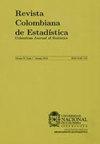一种识别动态共因子模型的新方法
Q3 Mathematics
引用次数: 1
摘要
在精确动态共同因素模型的背景下,使用多变量时间序列中的典型相关性来识别潜在共同因素的数量。在本文中,我们建立了典型相关和因子过程的自协方差函数之间的关系,以便修改预先建立的统计检验来检测共同因子的数量。特别是提高了测试功率。此外,我们提出了一种方法来识别因子过程的向量ARMA模型,该模型基于所谓的简单和部分典型自相关函数。我们通过一些模拟实例和一个实际数据应用来说明所提出的方法。本文章由计算机程序翻译,如有差异,请以英文原文为准。
On a new procedure for identifying a dynamic common factor model
In the context of the exact dynamic common factor model, canonical correlations in a multivariate time series are used to identify the number of latent common factors. In this paper, we establish a relationship between canonical correlations and the autocovariance function of the factor process, in order to modify a pre-established statistical test to detect the number of common factors. In particular, the test power is increased. Additionally, we propose a procedure to identify a vector ARMA model for the factor process, which is based on the so-called simple and partial canonical autocorrelation functions. We illustrate the proposed methodology by means of some simulated examples and a real data application.
求助全文
通过发布文献求助,成功后即可免费获取论文全文。
去求助
来源期刊

Revista Colombiana De Estadistica
STATISTICS & PROBABILITY-
CiteScore
1.20
自引率
0.00%
发文量
0
审稿时长
>12 weeks
期刊介绍:
The Colombian Journal of Statistics publishes original articles of theoretical, methodological and educational kind in any branch of Statistics. Purely theoretical papers should include illustration of the techniques presented with real data or at least simulation experiments in order to verify the usefulness of the contents presented. Informative articles of high quality methodologies or statistical techniques applied in different fields of knowledge are also considered. Only articles in English language are considered for publication.
The Editorial Committee assumes that the works submitted for evaluation
have not been previously published and are not being given simultaneously for publication elsewhere, and will not be without prior consent of the Committee, unless, as a result of the assessment, decides not publish in the journal. It is further assumed that when the authors deliver a document for publication in the Colombian Journal of Statistics, they know the above conditions and agree with them.
 求助内容:
求助内容: 应助结果提醒方式:
应助结果提醒方式:


